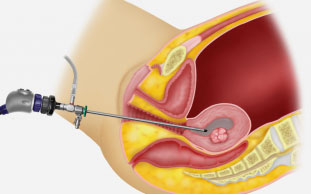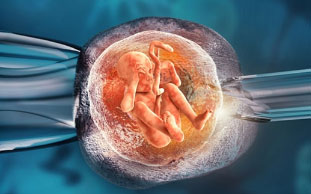What happens during laparoscopy?
Laparoscopy is usually performed under general anesthesia; however it can be performed with other types of anaesthesia that permit the patient to remain awake.
The typical pelvic laparoscopy involves a small (1/2″ to 3/4″) incision in the belly button or lower abdomen. The abdominal cavity is filled with carbon dioxide. Carbon dioxide causes the abdomen to swell which lifts the abdominal wall away from the internal organs, so the doctor has more room to work.
Next, a laparoscope (a one-half inch fiber-optic rod with a light source and video camera) is inserted through the belly button. The video camera permits the surgeon to see inside the abdominal area on video monitors located in the operating room.
Depending on the reason for the laparoscopy, the physician may perform surgery through the laparoscope by inserting various instruments into the laparoscope while using the video monitor as a guide. The video camera also allows the surgeon to take pictures of any problem areas he discovers.
Risk associated with laparoscopy
Risks for any type of surgery may be greater for people who are obese, smoke cigarettes, or have additional health problems like Diabetes or Hypertension.
Recovery period following laparoscopy
Laparoscopy results in relatively little pain and a quick recovery for most patients. Patients sometimes experience aches in the shoulders or chest following laparoscopy. This is because of the carbon dioxide that was used to fill the abdominal cavity. Most of the patients are fit to get discharged within a day or two.They can usually resume their daily activities within next few days.
What happens during Hysteroscopy?
Diagnostic Hysteroscopy is an out patient procedure which can be done either in the OPD(Office Hysteroscopy) or in the OT.
Operative Hysteroscopy is a major surgical procedure and involves usually General anaesthaesia. The distending media used are normal saline, Carbon Dioxide or Glycine.
The various problems like Endometrial Polyps or submucosal fibroids can be addressed with Hystroscopic surgery.








